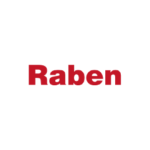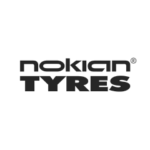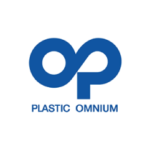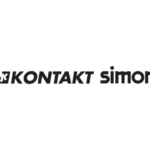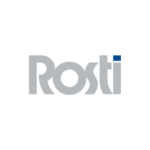If you have read the previous part of this article, you know that we stopped at the events of the 1990s. At that time, the idea of developing production plans that closely mirror the production environment arose. Not only the technology, but also the organisation of the production process. APS (Advanced Planning and Scheduling) systems were developed. APS systems design an optimum schedule of activities of production resources, taking into consideration process limitations and relevant optimisation criteria. Their scope may include long-term and even budget planning, as well as detailed, shift-based production schedules.
Production process: synchronisation of processes
An important issue in building plans is the synchronisation of production processes at all levels of manufacturing (from the first operation of picking raw materials to the last one, i.e. to the transfer to the finished goods warehouse) and the linking of the sequence of production and logistics operations (any disruption in the production process may result in a new version of the plan).
The APS systems operate in a constantly changing environment. On the one hand, they are affected by changes in demand coming from ERP, technological and construction changes, changes in the availability of resources or raw materials, and on the other hand, by information coming from the implementation of production and any potential risks arising in it. It should also be borne in mind that the APS system processes production plans on the volume of all demand within a specified time horizon and on all resources involved in the manufacturing process (which is particularly important when the resources are shared).
APS system: the bridge between ERP and MES
Is this possible? Not only possible, but real. It has happened. The APS system has divided the feuding sides of ERP and MES and has become the integrating link between them. Nowadays, its position is being strengthened, not least because production plans developed using it inspire confidence and are reliable and realistic. They also provide versions of the plan devises in such simulation variants that meet various business objectives. They are always based on up-to-date information and precise data. And after all, providing relevant data, a process worthy of a separate analysis in itself, is the basis of plan credibility. It sounds like a cliché, but I often deal with ignoring the issue or accusing APS of “poor planning”. Wrong data, wrong result. General data, vague plan.
Standardisation of the production management process: a step towards the future
The basis of systems such as APS, based on mathematical programming or metaheuristics, is batch data. All the more so if we want to move towards automation and AI algorithms. By the way, I wonder where the belief or susceptibility to claims that AI introduced into the mess will sort it out according to our business goals comes from? Surely it will at some point. For example, when we eliminate the worst link disrupting the circulation and reliability of data at all levels of data acquisition. Needless to say, that link is the man. For the time being, I will come back to what we can implement immediately, i.e. without undue delay. We should make decisions not only correctly but also quickly. Henry Ford said, anyone who does not buy a machine when he can afford it robs his factory of its profits. His words are still relevant today, in relation to digital technology or process improvement. Anyone who does not organise his production management process, does not standardise the flow of information, exposes his company to losses. It was not without reason that the associations developed the standards we presented, not to profit from their experience. The sooner we get through this process, the sooner we will enter the era of factories of the future. But what should this current standard be?
Below is a general information flow diagram that we have been promoting among manufacturing companies for many years. It is the result of our experience, taking into account best practices from available production management standards.
If you compare it with the list of functions made by the APICS, you will notice that the diagram complies with the MRP II standard. It presents the idea of an organisation chart based on a closed feedback loop (let us focus on production management information) where:
- ERP is a repository of knowledge about the history of demand, orders, long-term sales plan, inventories, technological and organisational data (if they are at an appropriate level of detail), BOM product structure, external logistics including the degree of fulfilment of delivery orders.
Referring to the ISA 95 nomenclature, this is Level 4 of the enterprise.
Removed from this level are issues that serve to design production plans and production schedules. The development of technological data can also be moved to a lower level if we are not able to provide it in sufficient detail from ERP. - MOM (I have marked it as XPRIMER and APS areas in the diagram) according to ISA 95 is Level 3 of the enterprise. This division of MOM is necessary because it is an area that is not a single IT system (I pointed this out in Part 1 of the article).
The APS system deals with the optimal construction of production plans, mapping their actual course, taking into account the internal logistics of material flow. It can also be source complementing technologies with parameters impossible to define at Level 4 of the enterprise. It provides the higher level with information concerning the date of fulfilment of production orders and material needs distributed on a timeline. It also provides simulations and indicators for plan quality assessment. It provides information about a production schedule to MES and human resources requirements to XPRIMER.
The XPRIMER platform offers us other functionalities that are necessary to support the production management process. These include another place to manage technological data if this process is not ergonomically handled in ERP or APS, MES area, CMMS, CPQ, traceability, production warehouse flow, tool room, manufacturing cost analysis and microsites to connect with machines.
Automatic graphics in XPRIMER based on APS data
A completely unique solution is the system for generating work schedules, also based on the XPRIMER platform, attached to this group of programs. Based on the APS task schedule, the system automatically designs employee schedules, using various defined crew selection strategies. It is impossible to overestimate this idea, especially in times when employee resources are shrinking faster than the level of production automation is increasing. Workforce resources are a serious production constraint and should be balanced in a feedback loop along with order scheduling. As an aside, I would add that employee self-service, electronic folders and mobile access increase the comprehensiveness of the XPRIMER platform also in managing the entire human capital.
Production scheduling issues have been removed from the MES. (Manufacturers, albeit reluctantly, admit that in this case the MES standard was a bit exaggerated. Just as ERP does poorly with production planning, so MES does with production scheduling.) This is in line with the trend that the MES is an execution system. It is where production schedules are published, production events are recorded and resource work statuses and material flow and consumption are tracked. MES also provides feedback to the APS system as well as to ERP.
Corporate management: communication
I have omitted the communication layer below MOM in the diagram (it was not the subject of the article directly), but if we are thinking about autonomous enterprises, it is natural that MOM/ MES systems should work more closely with Levels 2, 1 and 0. Here there has been a huge development in communication between these layers. MESs communicate with the facility equipment in many ways, database, OPC client, automation cards, I/O systems with PLCs and SCADA. Nowadays, we have plenty of examples of fully automated processes. What do they have in common? A specific sequence of operations, a specific transport method. Defined does not mean that it is determined to one. Assuming the product parameters at the input to the process, we know that we will receive a product compliant with them at the output. The system itself controls machines and peripheral equipment in order to implement the technology and BOM according to the formula assumed.
But let us move in the direction of the impact of the system on variable unit demand, on the response to unpredictable events, on the integration of rework orders into the process, on the control of internal logistics, etc. These are challenges related not only to the operation of the machines themselves (even if they will be self-learning), but their networking and the way they are transported, the just-in-time logistics. It is the development of a blood system of the company.
Summary:
The idea presented here is to build a modular production management system in an enterprise. It is difficult to specify one great universal combo for everything. I am an advocate of satisfying business needs through dedicated, specialised solutions, which are well thought-out enough that their individual parameterisation is sufficient to adjust them to the specificity of the enterprise. Because it is the enterprise that is supposed to be the beneficiary of the solution.
MRP II and ISA 95 enriched with new solutions, with communication protocols, enabling precise closing of the feedback loop, will be completely implemented. There is nothing to prevent, just like the idea of control itself, that this online communication. Will such a scheme become a self-controlling system? Enthusiasts claim that it is already happening. I am more of a sceptic. I am for thoughtful evolution, not leaping revolution. To change a paradigm, you first have to have one. So let us introduce the standard proposed because we can do it tomorrow and, then, we will see in what time we can replace it with another paradigm. If it really exists and is not a marketing product.
Dariusz Kacperczyk
Consultant to Management Board eq system
Do you have any comments or questions? Contact the author of the article via LinkedIn








